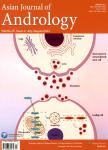Rodent epididymal cDNAs identified by sequence homology to human and canine counterparts
Rodent epididymal cDNAs identified by sequence homology to human and canine counterparts作者机构:IHF Institute for Hormone and Fertility Research University Hospital Hamburg-Eppendorf D-20251 Hamburg GermanyIHF Institute for Hormone and Fertility Research University Hospital Hamburg-Eppendorf D-20251 Hamburg Germany
出 版 物:《Asian Journal of Andrology》 (亚洲男性学杂志(英文版))
年 卷 期:2003年第5卷第4期
页 面:277-286页
核心收录:
学科分类:1001[医学-基础医学(可授医学、理学学位)] 10[医学]
主 题:epididymis cDNA homology cloning HE3-, HE4- and Ce8-homologous proteins
摘 要:Aim: Identification of the rodent counterparts of human and canine epididymal cDNAs HE3, HE4 and Ce8/Ly6G5C by sequence homology and analysis of their expression patterns and regulation level in the rat. Methods: Electronic screening of Expressed Sequence Tag (EST) and genomic databases, followed by RT-PCR and Northern blot analysis. Results: Rodent ESTs and genomic sequences homologous to HE3, HE4 and Ce8/Ly6G5C were identified in the public databases and the full-length rat cDNAs cloned. To emphasise their homology to the human and canine genes, they were named Me3/Re3, Me4/Re4 and Re8 for mouse and rat counterparts, respectively. mRNA expression patterns were analysed in rats, including rat HEl and HE5/CD52 counterparts as controls. Re3 and Re8 mRNAs were only found in the rat epididymis, while Re4 showed a broader tissue distribution. Within the epididymis, Re3 and Re4 mRNAs were detected in all regions; Re8, on the other hand, was restricted to the caput. During postnatal development, Re3 and control mRNAs were found from the earliest stages investigated, while Re8 mRNA was observed only from day 24 postnatum, corresponding to the onset of spermatogenesis in the prepubertal testis. Castration and testosterone supplementation of adult male rats suggested that none of the cloned mRNAs was directly androgen-regulated. Efferent duct ligation, however, showed that Re8 mRNA levels depended on testicular factors other than androgens. Conclusion: The novel rodent cDNAs can now be used to monitor epididymal gene expression more closely and to set up various regulatory and functional studies.



